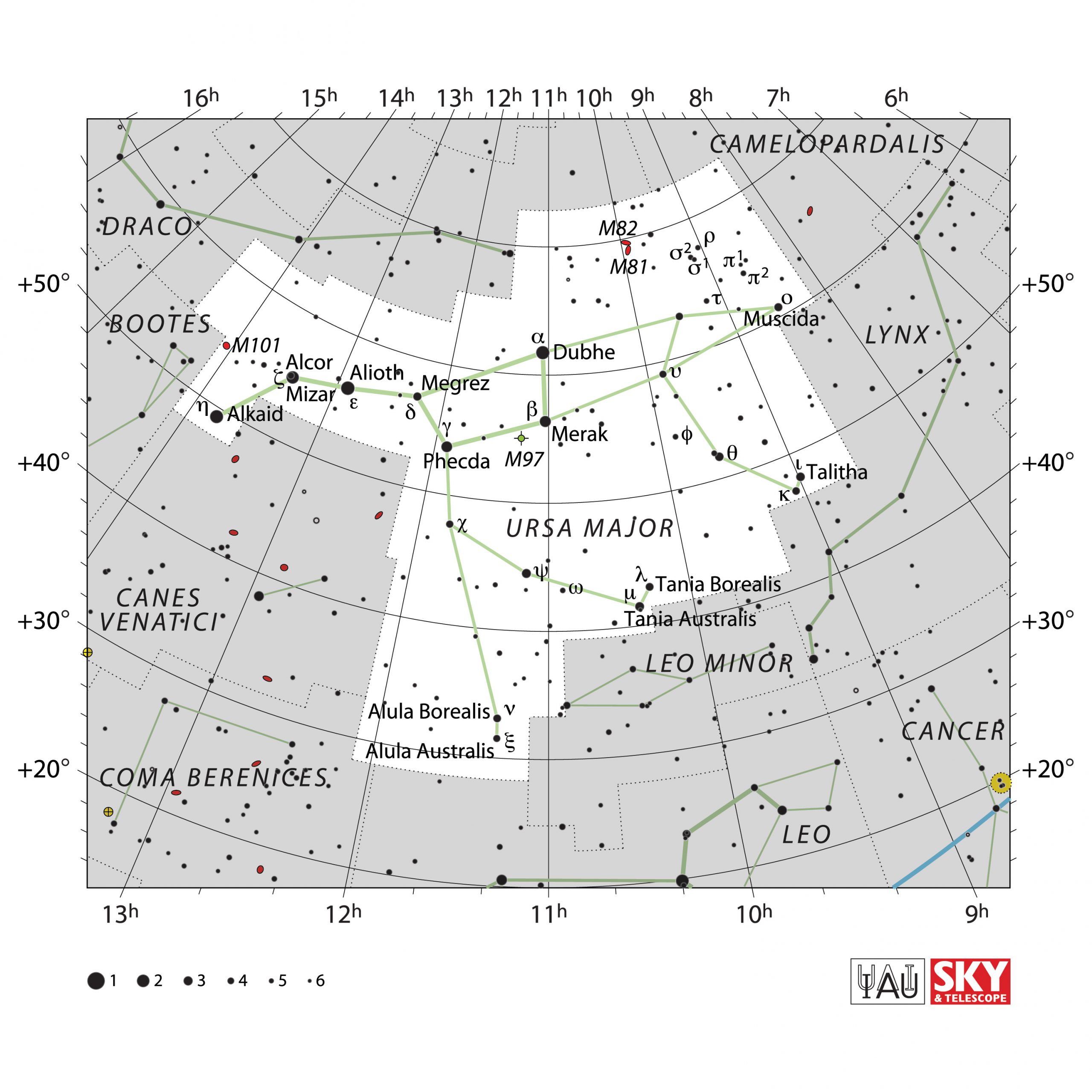Profile / Characteristics
| English translation | Latin declination and pronunciations | Size/ °² | # stars (visible) |
| the Great Bear | Ursa Major – ER-suh MAY-jur Ursae Majoris – ER-suh muh-JOR-iss | 1280 | 209 |
Main Star (brightest one):
| Designation | HIP number | name in IAU-CSN | brightness |
| α UMa | HIP 54061 | Dubhe | 1.79 mag (V) |
Our (modern) Explanation
Ursa Major is the “Great Bear” and one of the traditional Greek constellations described in Ptolemy of Alexandria’s 2nd century compilation of 48 constellations. The Big Dipper is called the Northern Dipper in ancient China and the Wagon in ancient Mesopotamia. The much larger image of the bear was imagined by the Greeks as the constellation was used to point wanderers to the “land of the bears” in the far north (from Greece/ Turkey).
Ancient Globes

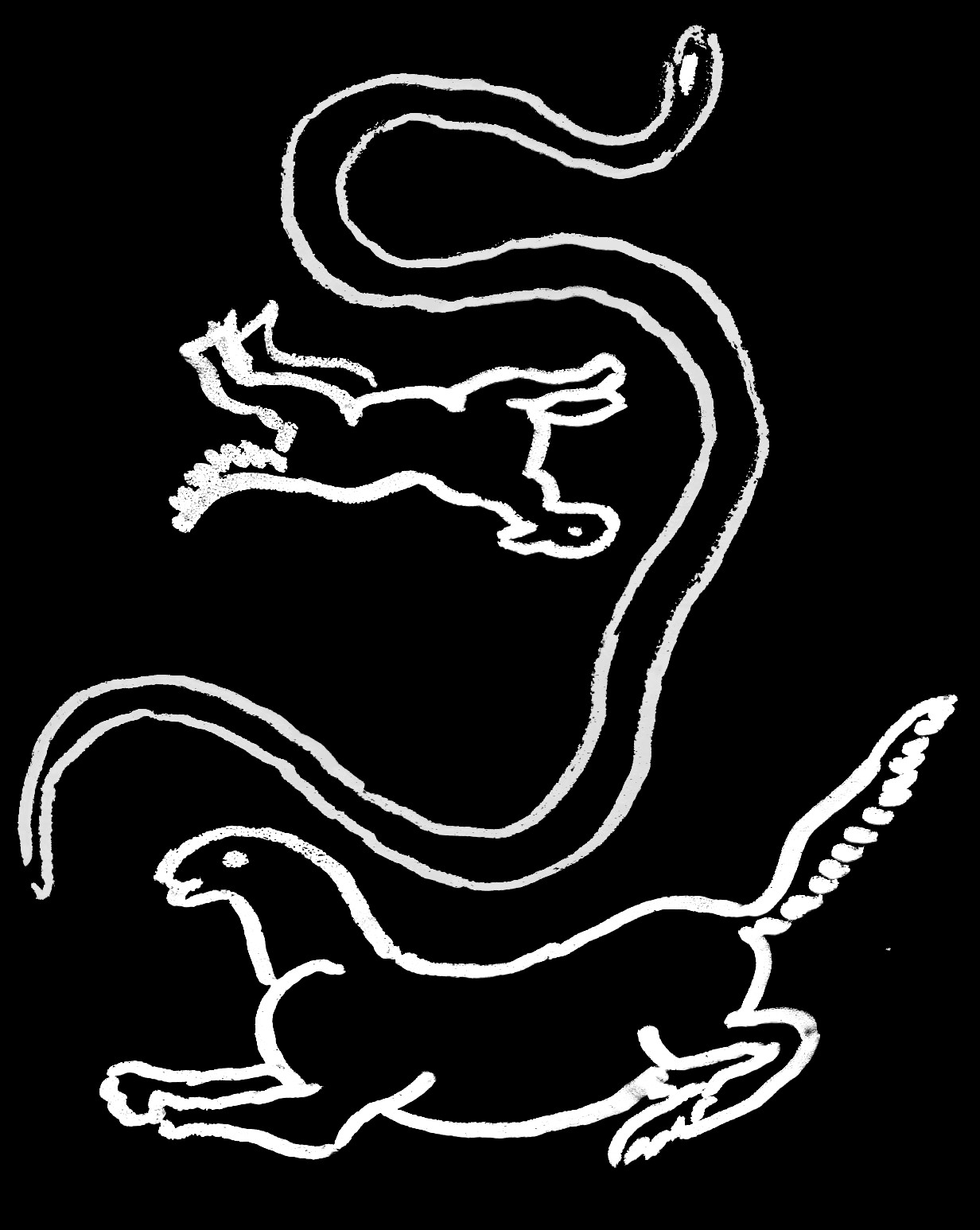
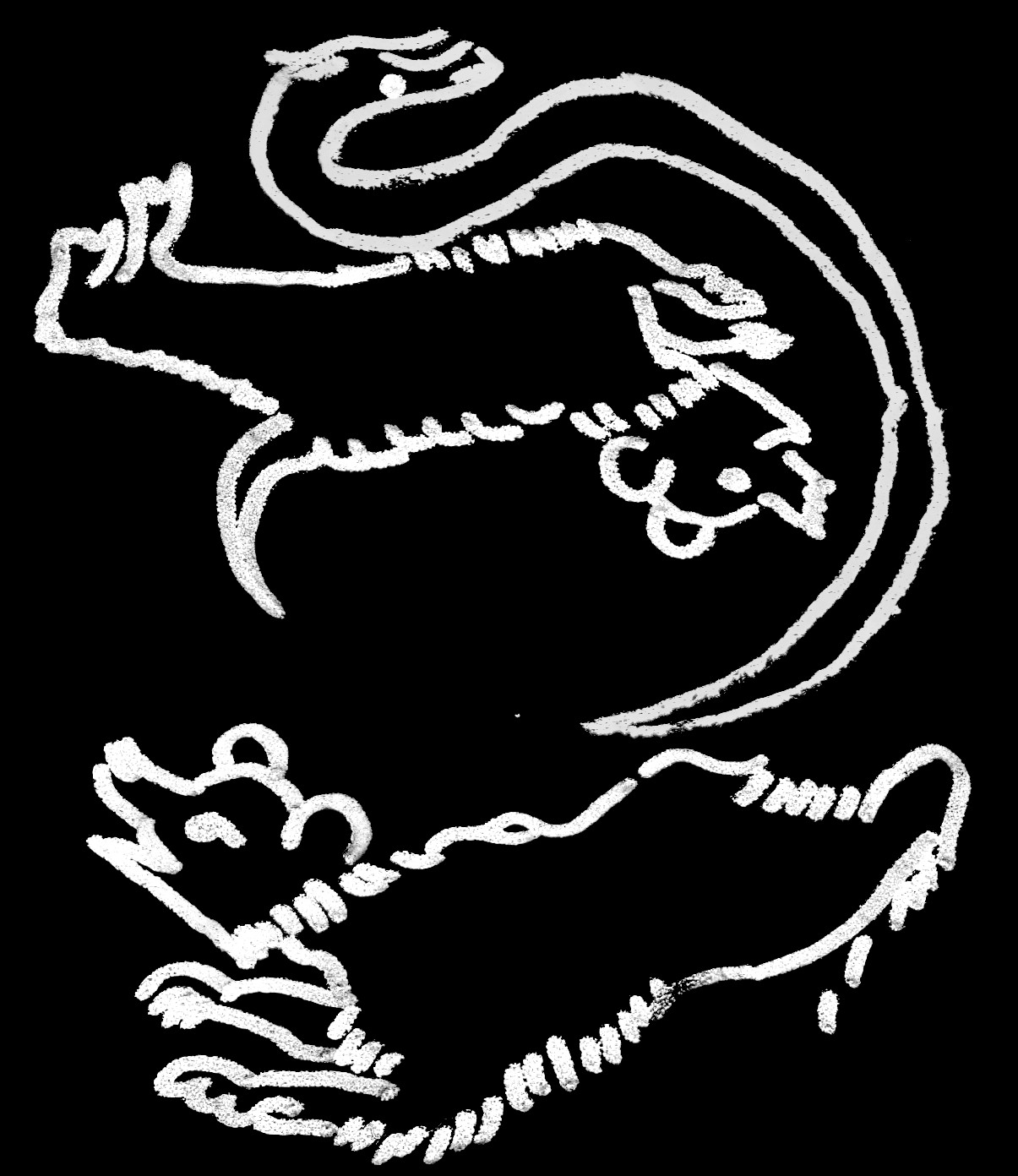
Farnese Globe
Kugel Globe
Mainz Globe
missing (hole in the marble)
Ancient Lore & Meaning
Aratus
Reference:
English translation by Douglas Kidd (1997).
Aratus: Phaenomena, Cambridge Classical Texts and Commentaries, Series Number 34
Pseudo-Eratosthenes
Hesiod: daughter of Lycaon of Arcadia, Amphis: consort of Artemis, maiden changed into a she-bear, entered the temple which was not allowed and was therefore fated to die by the Arcadians but rescued by Zeus
References:
French translation by:
Jordi Pàmias i Massana and Arnaud Zucker (2013). Ératosthènes de Cyrène – Catastérismes, Les Belles Lettres, Paris
English version in:
Robin Hard (2015): Eratosthenes and Hyginus Constellation Myths with Aratus’s Phaenomena, Oxford World’s Classics
Modern and Mediaeval Depiction
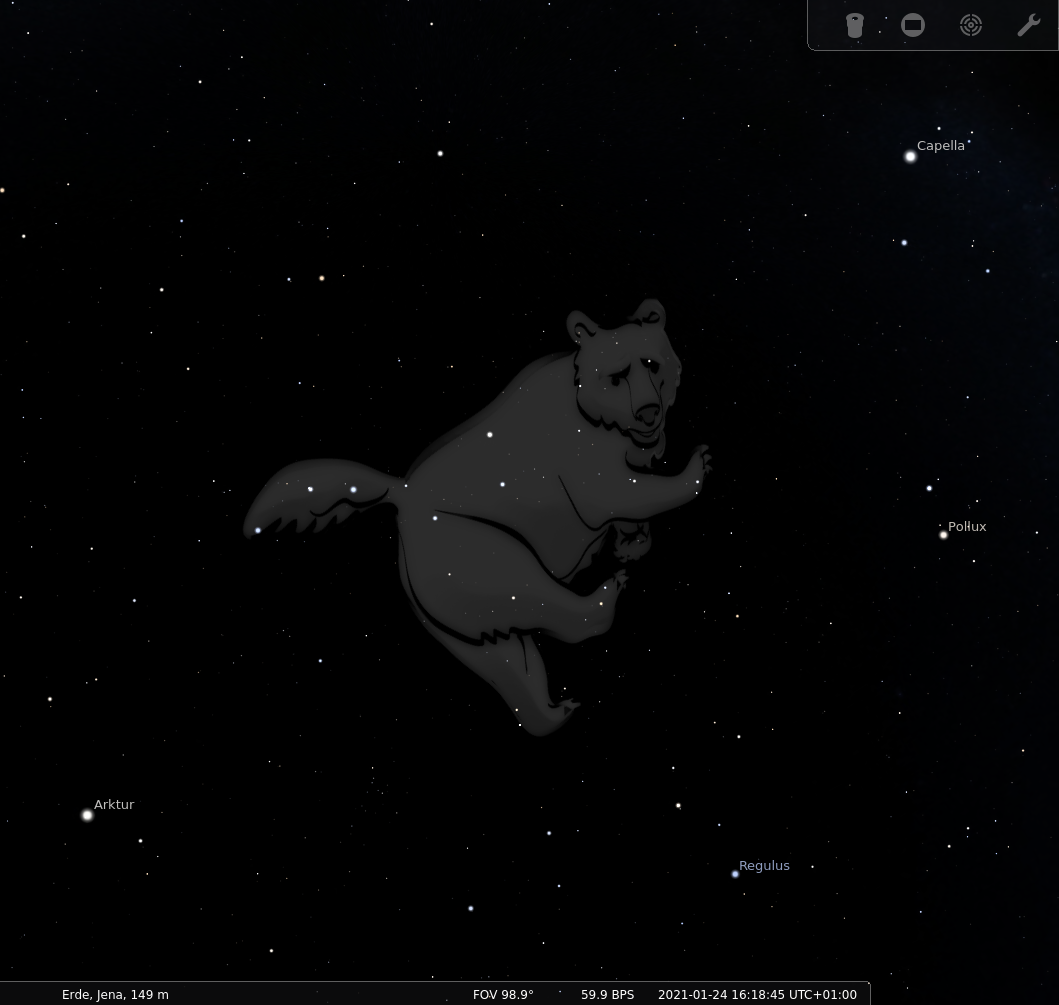
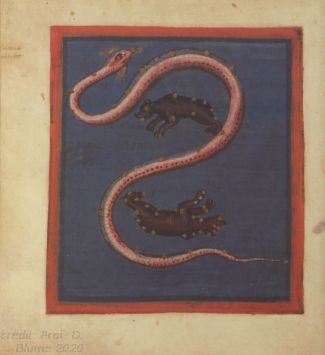
Depiction in Stellarium (by Fabien Chéreau, since 2000 CE)
depiction in the Leiden Aratea (9th century CE)
Early Modern Interpretation
Contemporary
As one of their first tasks in the 1920s, the newly founded International Astronomical Union (IAU) established constellation standards. The Belgian astronomer Eugène Delporte was assigned to the task to define borders of constellations parallel to lines of declination and right ascension. They were accepted by the General Assembly in 1928. The standardized names and abbreviations had already been accepted in 1922 and 1925.
